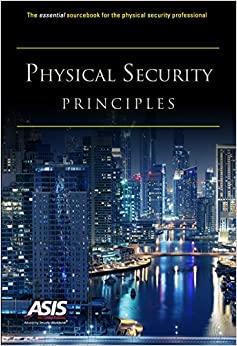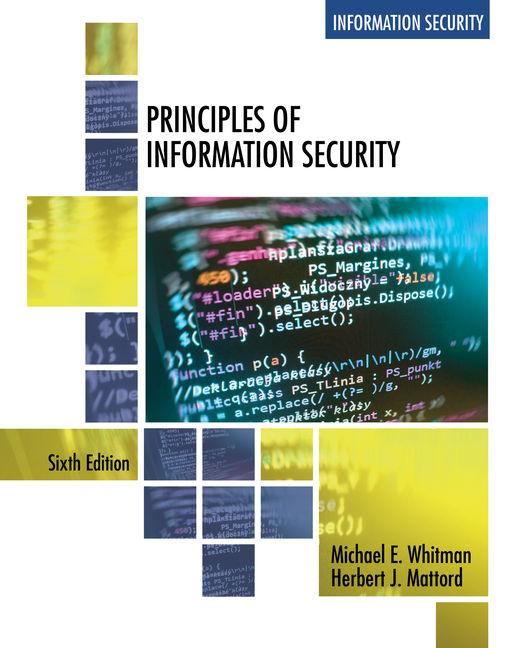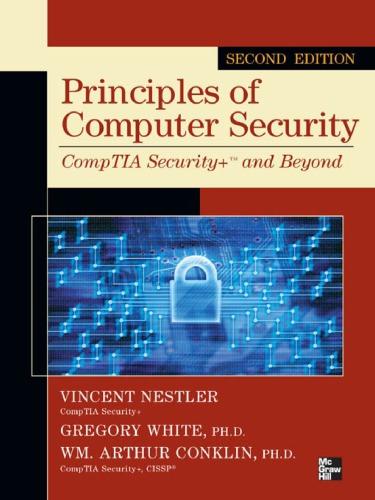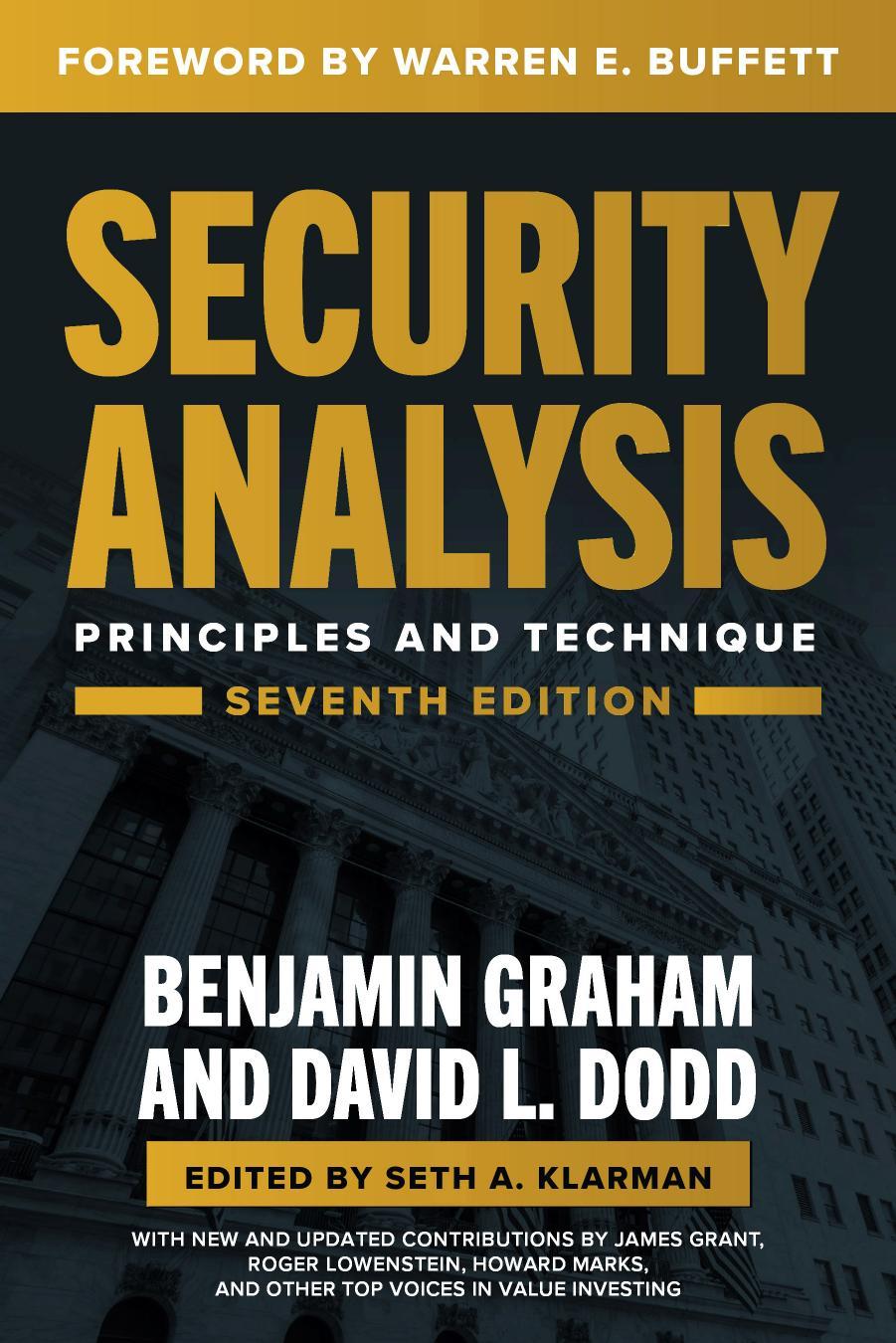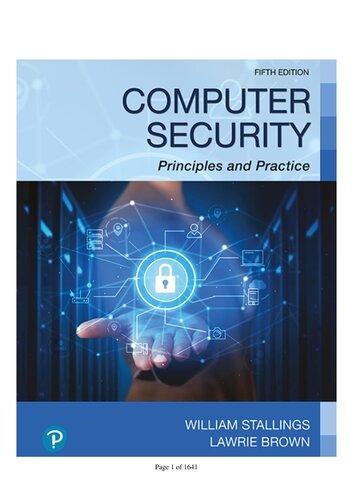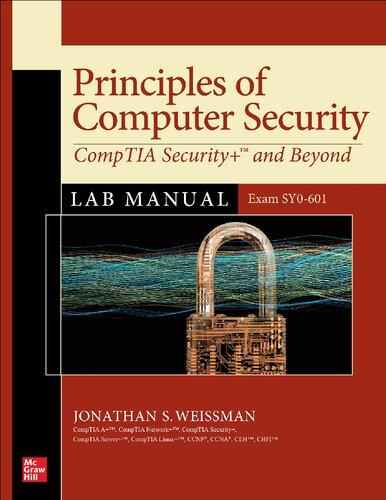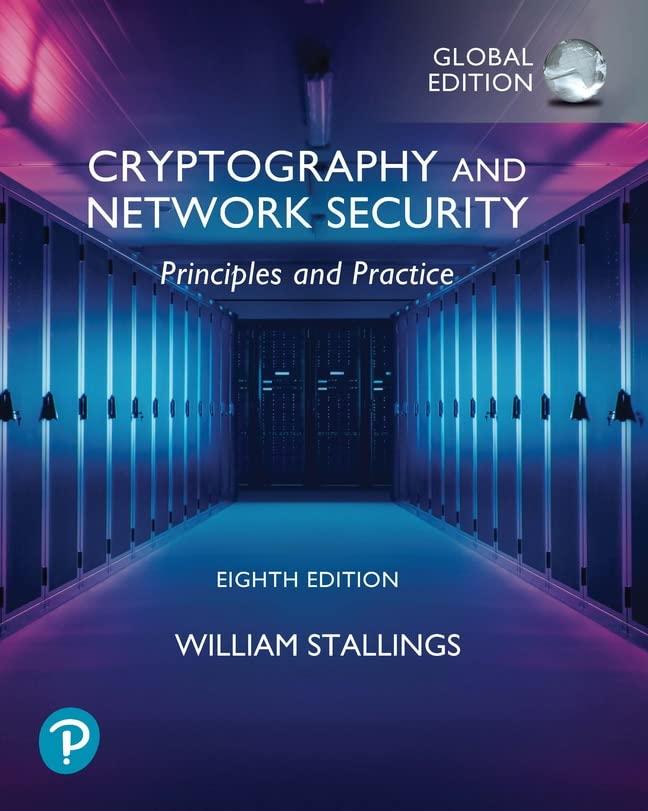CONTENTS
Preface
Contributors
Introduction
PART I
RISKMANAGEMENT: THEBASISFORPHYSICALSECURITY
Chapter 1.CONCEPTSINSECURITYRISKMANAGEMENT
1.1 TakingaStrategicRiskManagementApproach
1.2 TheSecurityRiskManagementProcess
1.2.1 ConsideringAssets
1.2.2 AComprehensiveView oftheThreat
1.2.3 LookingatVulnerabilities
1.2.4 AnalyzingtheRisk
1.2.5 ProtectiveMeasures
1.3 RiskMitigation
1.3.1 TheFour Ds
1.3.2 TheFiveAvenuestoAddressRisk
1.3.3 LayeredSecurity
1.4 MitigationMeasures
References
Chapter 2.FUNCTIONSOFPHYSICALSECURITY
2.1 DefinitionandPurposeofPhysical Security
2.2 FunctionsVersusComponentsofPhysical Security
2.2.1 Structural Components
2.2.2 ElectronicComponents
2.2.3 HumanComponents
2.3 Peripheral SystemsandInterfaces
References
Chapter 3.PLANNING ANDCONDUCTING PHYSICALSECURITY ASSESSMENTS
3.1 General RiskAssessmentModelsandConsiderations
3.2 QualitativeandQuantitativeMethods
3.2.1 Assets
3.2.2 EvaluatingThreats
3.2.3 Vulnerabilities
3.2.4 RiskAnalysis
3.2.5 RiskMitigation
3.2.6 LeveragingOutsideExpertise
3.3 Physical SecurityAssessments
3.3.1 FramingtheSecuritySurveyandPuttingItinContext
3.3.2 ApproachestoPhysical SecurityAssessments
3.4 General Guidelines AreastoAssess
3.4.1 Typical AreasandItemstoAssess
3.4.2 Tests
3.5 ApplyingAssessmentResults
3.6 AutomatedAssessmentTools
References
Chapter 4.MEASURING EFFECTIVENESS: CONCEPTSINPHYSICAL SECURITYMETRICS
4.1 UnderstandingMetrics
4.1.1 BenefitsofaSecurityMetricsProgram
4.1.2 DesigningaMetricsProgram
4.2 Physical SecurityMetrics
4.2.1 Physical SecuritySystemsMetrics
4.2.2 Physical SecurityPersonnel Metrics
4.2.3 Physical SecurityComplianceMetricsinthePublicSector
4.2.4 PresentingAggregateStatusfor Physical SecurityMetrics
4.3 Additional RecommendedMetrics
4.4 ApplicationofMetricsThroughoutThisBook
References
DESIGNPRINCIPLESANDPRACTICES
Chapter 5.BASICDESIGNCONCEPTS
5.1 DesignPrinciples
5.1.1 PointVersusAreaSecurity
5.1.2 ConflictAvoidance
5.1.3 Balance
5.1.4 Additional DesignElements
5.2 ExamplesofDesignPractices: GoodandNotSoGood
References
Chapter 6.INFLUENCING FACTORSINPHYSICALSECURITYDESIGN
6.1 CharacteristicsoftheAssetsunder Protection
6.2 CharacteristicsoftheBuildingor Facility
6.2.1 OwnershipandOccupancy
6.2.2 PurposeoftheFacility
6.2.3 Access
6.3 CharacteristicsoftheSurroundings
6.4 CharacteristicsoftheLocation
6.5 Additional InfluencingFactors
6.5.1 SelectingMitigationOptionsBasedonInfluencingFactors
References
Chapter 7.SECURITYARCHITECTUREANDENGINEERING
7.1 DesignOverview
7.2 CodesandRegulations
7.3 ProjectRequirements
7.4 TypeofConstruction
7.5 SiteLayout
7.5.1 Perimeter
7.5.2 Lighting
7.5.3 BuildingDesignAgainstBlast
7.5.4 BuildingAccess
7.6 Material Selection
7.6.1 BuildingStructure
7.6.2 Facades
7.6.3 Interior Layout
7.6.4 Glazing
7.7 SiteUtilities
7.7.1 HVAC
7.7.2 EmergencyPower
7.7.3 Other Utilities
7.8 LifeSafetySystems
7.8.1 Evacuation
7.8.2 Shelter-in-Place
7.9 PublicationsRelevanttoSecurityArchitectureandEngineering
References
Chapter 8.INTEGRATEDSECURITYANDPROTECTIONSTRATEGIES
8.1 IntegratedElectronicSecuritySystems
8.2 IntegratedPhysical SecurityElements
8.3 IntegratedSecurityPrograms
8.4 IntegrationinEnterpriseRiskManagement
References
PHYSICALSECURITYANDPROTECTIONSTRATEGIES
Chapter 9.STRUCTURALSECURITYMEASURES
9.1 Barriers
9.1.1 Walls
9.1.2 Doors
9.1.3 WindowsandOther Openings
9.1.4 RoofsandFloors
9.1.5 FencingandPerimeter Walls
9.1.6 BlockingBarriers
9.1.7 SymbolicandNatural Barriers
9.2 ContainersandVaults
9.2.1 Safes
9.2.2 Vaults
9.3 LocksandLockingMechanisms
9.3.1 Mechanical Locks
9.3.2 ElectrifiedLockingMechanisms
9.3.3 DesigningSecurityLockingSystems
9.4 LightingandSecurityApplications
9.4.1 TypesofLightingEquipmentandLamps
9.4.2 LightingChallenges
9.4.3 CharacteristicsofLightandLighting
9.4.4 Overview ofLightingSystems
9.4.5 EconomicConsiderations
9.4.6 StartingandRestrike
9.4.7 SecurityLightingfor SelectedApplications
9.4.8 LightingConsiderationsfor ElectronicSurveillanceSystems
9.4.9 Standardsfor SecurityLightingLevels References
Chapter 10.CRIMEPREVENTIONTHROUGHENVIROMENTALDESIGN
10.1 PrinciplesofCPTED
10.1.1 Criminal BehaviorsandPatterns
10.1.2 Later DevelopmentsinCPTED
10.2 ToolsofCPTED
10.2.1 ToolsThatAddresstheThreeElementsofCPTED
10.2.2 ReducingCrimeThroughArchitectural Design
10.2.3 AccessControl,Surveillance,andTerritorial Reinforcement
10.3 CPTEDApplicationsinVariousSettings
10.3.1 Commercial OfficeBuildings
10.3.2 Industrial BuildingsandFacilities
10.3.3 ParkingFacilities
10.3.4 Schools
10.3.5 AutomatedTeller Machines(ATMS)
10.3.6 U.S.Federal Buildings
10.4 IntegrationofCPTEDandTraditional Security
10.5 OneExampleofaCPTEDSurveyTemplate
References
Chapter 11.ELECTRONICSECURITYSYSTEMS
11.1 AccessControl Systems
11.1.1 Personnel AccessControl
11.1.2 Locks
11.2 ContrabandDetection
11.2.1 Metal Detectors
11.2.2 PackageSearch
11.2.3 ExplosivesDetection
11.2.4 Chemical andBiological AgentDetection
11.3 Physical IntrusionDetectionSystems
11.3.1 PerformanceCharacteristics
11.3.2 Standards
11.3.3 Exterior Sensors
11.3.4 Interior Sensors
11.4 VideoSurveillance
11.4.1 Functional Requirements
11.4.2 TheoryofVisual Security
11.4.3 UsesofVideoSubsystemsinSecurity
11.4.4 AnalogSystemComponents
11.4.5 Digital SystemComponents
11.4.6 SystemDesign
11.4.7 EquipmentSelection
11.4.8 Additional DesignConsiderationsfor VideoAssessment
11.4.9 EvaluationofVideoAssessmentSystems
11.4.10 Maintenance
11.4.11 FutureofVideoSurveillanceSystems
11.5 CommunicationsandAnnunciationSystems
11.5.1 AC&DAttributes
11.5.2 AlarmCommunicationSubsystem
11.5.3 SecurityCommunications
11.5.4 AlarmControl andDisplay
11.6 TrendsandIssuesinElectronicSystemsIntegration
References
Chapter 12.SECURITYOFFICERSANDTHEHUMANELEMENT
12.1 SecurityOfficer UtilizationGrowth
12.2 ContemporaryChallenges
12.3 DeterminingtheNeedfor aSecurityForce
12.4 SecurityForceModels
12.5 BasicSecurityOfficer Functions
12.5.1 AccessControl
12.5.2 Patrol
12.5.3 Inspection
12.5.4 Monitoring
12.5.5 EmergencyResponse
12.5.6 TrafficControl
12.5.7 DealingwithDisturbedPeople
12.5.8 Escort
12.5.9 Special Assignments
12.5.10 RecordKeeping
12.6 SecurityOfficer Roles
12.6.1 PublicRelations/ManagementRepresentative
12.6.2 IntelligenceAgent
12.6.3 Enforcement/ComplianceAgent
12.6.4 Legal Consultant
12.6.5 Physical SecuritySpecialist
12.7 UniformsandEquipment
12.7.1 Weapons
12.8 SecurityOfficer Selection
12.8.1 ASISGuidelinePSO-2010
12.8.2 CanadianGeneral StandardsBoardCAN/CGSB-133.1-99
12.8.3 Personal Attributes
12.9 SecurityOfficer Training
12.9.1 KeyTrainingConcepts
12.9.2 BenefitsofTraining
12.9.3 IdentifyingTrainingRequirements
12.9.4 MethodsofTraining
12.9.5 TheTrainingProcess
12.9.6 ObstaclestoProvidingTraining
12.9.7 TrainingStrategies
12.10 ManagingtheSecurityOfficer Force
12.10.1 Personnel Requirements
12.10.2 General,Post,andSpecial Orders
12.10.3 Scheduling
12.10.4 Supervision
12.10.5 QualityAssuranceandQualityControl
12.10.6 QualityControl Inspections
12.10.7 ManagementUseofData
12.10.8 EnhancingJobPerformance
12.11 LeveragingtheHumanElement
References
14.1 SystemDesignPrinciples
14.2 Initial Phases
14.3 DesignPhases
14.3.1 DevelopmentofDesignCriteria
14.3.2 BasisofDesign
14.3.3 Conceptual Design
14.3.4 DesignandDocumentation
14.3.5 Specifications
14.3.6 Drawings
14.3.7 DesignCoordination
14.4 Contracting
14.4.1 Initial Budget
14.4.2 EstimationConsiderations
14.4.3 TypesofCostEstimates
14.4.4 Life-CycleCost
14.4.5 SampleEstimate
14.5 TheRoleofConsultants
14.6 VideoSystems
14.6.1 TheFirstEvolution: AnalogtoDigital
14.6.2 TheSecondEvolution: StandardResolutiontoMegapixel
14.6.3 ProcessedVideo,VideoAnalytics,andIntelligentVideo
14.6.4 VideoSystemsIntegration
14.7 MergingLegacySystems
14.7.1 AccessControl Systems
14.7.2 LegacyVideoSystems
14.7.3 LegacyIntercomSystems
14.7.4 SecurityNetworksandLegacyIntegration
14.8 Procurement
14.8.1 ProcurementForms
14.8.2 ProcurementProcess
Chapter 15.PROJECTIMPLEMENTATION
15.1 SitePreparation
15.2 Contractor Coordination
Another random document with no related content on Scribd:
INCLUDING BUT NOT LIMITED TO WARRANTIES OF MERCHANTABILITY OR FITNESS FOR ANY PURPOSE.
1.F.5. Some states do not allow disclaimers of certain implied warranties or the exclusion or limitation of certain types of damages. If any disclaimer or limitation set forth in this agreement violates the law of the state applicable to this agreement, the agreement shall be interpreted to make the maximum disclaimer or limitation permitted by the applicable state law. The invalidity or unenforceability of any provision of this agreement shall not void the remaining provisions.
1.F.6. INDEMNITY - You agree to indemnify and hold the Foundation, the trademark owner, any agent or employee of the Foundation, anyone providing copies of Project Gutenberg™ electronic works in accordance with this agreement, and any volunteers associated with the production, promotion and distribution of Project Gutenberg™ electronic works, harmless from all liability, costs and expenses, including legal fees, that arise directly or indirectly from any of the following which you do or cause to occur: (a) distribution of this or any Project Gutenberg™ work, (b) alteration, modification, or additions or deletions to any Project Gutenberg™ work, and (c) any Defect you cause.
Section 2. Information about the Mission of Project Gutenberg™
Project Gutenberg™ is synonymous with the free distribution of electronic works in formats readable by the widest variety of computers including obsolete, old, middle-aged and new computers. It exists because of the efforts of hundreds of volunteers and donations from people in all walks of life.
Volunteers and financial support to provide volunteers with the assistance they need are critical to reaching Project Gutenberg™’s goals and ensuring that the Project Gutenberg™ collection will
remain freely available for generations to come. In 2001, the Project Gutenberg Literary Archive Foundation was created to provide a secure and permanent future for Project Gutenberg™ and future generations. To learn more about the Project Gutenberg Literary Archive Foundation and how your efforts and donations can help, see Sections 3 and 4 and the Foundation information page at www.gutenberg.org.
Section 3. Information about the Project Gutenberg Literary Archive Foundation
The Project Gutenberg Literary Archive Foundation is a non-profit 501(c)(3) educational corporation organized under the laws of the state of Mississippi and granted tax exempt status by the Internal Revenue Service. The Foundation’s EIN or federal tax identification number is 64-6221541. Contributions to the Project Gutenberg Literary Archive Foundation are tax deductible to the full extent permitted by U.S. federal laws and your state’s laws.
The Foundation’s business office is located at 809 North 1500 West, Salt Lake City, UT 84116, (801) 596-1887. Email contact links and up to date contact information can be found at the Foundation’s website and official page at www.gutenberg.org/contact
Section 4. Information about Donations to the Project Gutenberg Literary Archive Foundation
Project Gutenberg™ depends upon and cannot survive without widespread public support and donations to carry out its mission of increasing the number of public domain and licensed works that can be freely distributed in machine-readable form accessible by the widest array of equipment including outdated equipment. Many
small donations ($1 to $5,000) are particularly important to maintaining tax exempt status with the IRS.
The Foundation is committed to complying with the laws regulating charities and charitable donations in all 50 states of the United States. Compliance requirements are not uniform and it takes a considerable effort, much paperwork and many fees to meet and keep up with these requirements. We do not solicit donations in locations where we have not received written confirmation of compliance. To SEND DONATIONS or determine the status of compliance for any particular state visit www.gutenberg.org/donate.
While we cannot and do not solicit contributions from states where we have not met the solicitation requirements, we know of no prohibition against accepting unsolicited donations from donors in such states who approach us with offers to donate.
International donations are gratefully accepted, but we cannot make any statements concerning tax treatment of donations received from outside the United States. U.S. laws alone swamp our small staff.
Please check the Project Gutenberg web pages for current donation methods and addresses. Donations are accepted in a number of other ways including checks, online payments and credit card donations. To donate, please visit: www.gutenberg.org/donate.
Section 5. General Information About Project Gutenberg™ electronic works
Professor Michael S. Hart was the originator of the Project Gutenberg™ concept of a library of electronic works that could be freely shared with anyone. For forty years, he produced and distributed Project Gutenberg™ eBooks with only a loose network of volunteer support.
Project Gutenberg™ eBooks are often created from several printed editions, all of which are confirmed as not protected by copyright in the U.S. unless a copyright notice is included. Thus, we do not necessarily keep eBooks in compliance with any particular paper edition.
Most people start at our website which has the main PG search facility: www.gutenberg.org.
This website includes information about Project Gutenberg™, including how to make donations to the Project Gutenberg Literary Archive Foundation, how to help produce our new eBooks, and how to subscribe to our email newsletter to hear about new eBooks.
